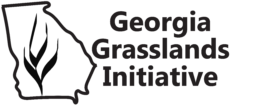There is a difference in planting seeds that are native to the Southeastern US and those that are native to Georgia. Directly sown seeds germinate and grow in the northern third of our state, but they may take years to first bloom.
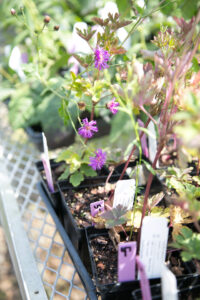 Plant plugs are seedlings which have previously been germinated, and can be transported to another pot or garden. You can grow your own or purchase them from a nursery, which is helpful if the germination process is lengthy. Plant plugs are important because they help improve the plant’s durability by increasing their chances of fighting pests and drought. Plugs are more expensive than buying seeds, but there is much less care necessary upfront. Most sites have degraded soils and long weed pressures, so considering planting small plugs if there are multiple wildflowers being planted could be beneficial, especially if you are inter-planting into an old field or a semi-natural space on your land.
Plant plugs are seedlings which have previously been germinated, and can be transported to another pot or garden. You can grow your own or purchase them from a nursery, which is helpful if the germination process is lengthy. Plant plugs are important because they help improve the plant’s durability by increasing their chances of fighting pests and drought. Plugs are more expensive than buying seeds, but there is much less care necessary upfront. Most sites have degraded soils and long weed pressures, so considering planting small plugs if there are multiple wildflowers being planted could be beneficial, especially if you are inter-planting into an old field or a semi-natural space on your land.
Pocket prairies are small areas that contain native plants to the area they are planted in, and are typically less than 1 acre. These act as a space for bees and butterflies to thrive in, and promote pollination. If interested, certainly investigate the option of planting a pocket prairie in a space by you.
When humans try to aid in repairing damage done to the environment through logging, natural disasters, grazing, or other harmful acts, this is considered an Old Field Restoration. This frequently involves introducing native plants back to the environment. Prairie restorations also involve restoring native plant communities to try to repair old prairie lands. This results in helping to improve the quality of the soil and
 create a higher resistance to drought and a greater level of durability. An example of a successful Prairie Restoration is the Elaine Nash Prairie Project, which caring for the surviving prairie near the powerline by the State Botanical Garden of Georgia. Elaine Nash studied grasses and is considered an expert in Native Grasslands, who co-authored Native Plants for Georgia. Through her creation of educational materials and support of Georgia Native Plant sales, she has helped to make a lasting impact across Georgia.
create a higher resistance to drought and a greater level of durability. An example of a successful Prairie Restoration is the Elaine Nash Prairie Project, which caring for the surviving prairie near the powerline by the State Botanical Garden of Georgia. Elaine Nash studied grasses and is considered an expert in Native Grasslands, who co-authored Native Plants for Georgia. Through her creation of educational materials and support of Georgia Native Plant sales, she has helped to make a lasting impact across Georgia.
Along Loop 10 in Athens, Georgia, 58,000 daffodil bulbs and 104 crape myrtle trees were planted to help beautify the space while providing a healthy native habitat. The Georgia Department of Transportation and the ACC Landscape Management Division worked together to result in this planting.
Roadside restorations involve the planting of native plants along roadsides, which is important for spreading native plants and helping them to thrive. To learn more about the success of roadside restorations, check out Jennifer Ceska’s Cues of Care article.
Just because a plant is native does not mean it can grow well in any Georgia soil. You have to choose the right plant for the right place. Knowing what kind of soil you have is an important first step in gardening. UGA Extension can help you get started with this.
Positively impact wildlife in Georgia by adding garden beds and incorporating native plants in your space. There are shrubs, trees, flowers, grasses, and more that would add beauty to your space while benefiting the environment. Gardens and potted plants are the perfect ways to add beauty in a low maintenance way. By allowing shrubs to show their natural growth in their habitat rather than sheering them into shapes, you will save time and resources. Native Plants are vital – to further learn about their importance, check out this video.
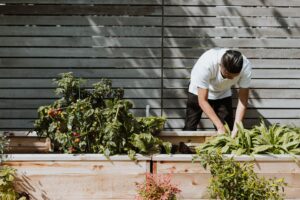
When starting a garden, consider the location of your yard you would like it to reside in. Make sure to find a place where sunlight falls at least 6 hours of the day and that you can drag a hose or a water source over to it easily. Find a soil that is full of nutrients and make sure it drains well. Plan out where you would like to plant which plants in your garden, and make sure the plants have the right conditions to thrive. Research the planting seasons and needed conditions of the plants you are planting, and invest in basic garden tools such as hoes, rakes, and shovels to properly care for your garden.
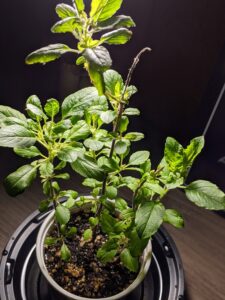 If space is an issue, plants can live in pots!
If space is an issue, plants can live in pots!
Check out this video on landscaping native plants by a garden master in the area of Athens, Georgia to see where to begin!
A Georgia Native Plant Guide by Tina M. Samuels is a great resource which provides the endangered species of native plants in Georgia, and explains in detail the ways to cultivate a native garden in your space.
If you are looking to get further involved, The Georgia Native Plant Society is a great resource to go to with questions, use as a resource, or attend an event through.
Listen to The Native Plant Podcast from Jennifer Ceska, the Conservation Coordinator at the State Botanical Garden of Georgia, to further learn about the ways you can contribute to the vitality of Georgia’s ecosystem.
There are many native plant gardens around the state of Georgia, ranging from small gardens in yards to large State Botanical Gardens. Consider how you can help the Georgia wildlife in the greenspace of your home, business, or school!
Understanding the land use history of your site (was it tilled, parked on, were other crops grown here) is very important as well for understand the health of your soil and what weedy or invasive seeds may be on site. Gardening has changed greatly over the last 15 years with more regard for how we treat soil. Not all garden sites need to be tilled. Mulching is essential for improving soil and conserving water. There are many types of mulch available. Don’t underestimate the value of your leaves gathered every fall to use as mulch. And you do not need to chip these leaves. Use your leaves as mulch, tucking them in around your perennial plants. And, you do not need to cut your garden totally back to the ground in the fall. Leave the seeds for the birds. Leave the stems for insects hibernating and for shelter material for birds.
For all manner of tips on gardening, check out the publications of our friends at the Georgia Native Plant Society.
Additional Resources
Suggestions on native plants for various soil types and where to purchase them
https://www.accgov.com/9173/Native-Plants
For details on native plants and their soil and light preferences and needs, check out these pages by our friends at UGA Extension.
Trees, Shrubs, and Woody Vines
Ferns
Wildflowers
Grasses and Sedges
Incorporate natives into every garden and patio. Here’s why.
https://www.audubon.org/news/new-research-further-proves-native-plants-offer-more-bugs-birds
Reduce your lawn one small bed at a time
